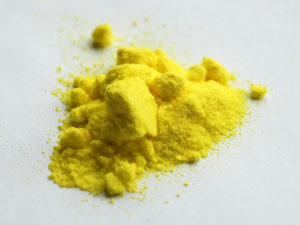Chromate Formula
Chromate may be a chromium oxo anion and a divalent inorganic anion. However, it’s formed by the removal of two protons in acid. It acts as a powerful oxidant and is typically a conjugate base of hydrogen chromate. The chromate ion usually consists of 1 chromium atom (+6 oxidation state) and 4 oxide atoms. The general charge is -2. During this chapter, we’ll learn the chromate formula, its properties, and various applications.
Chromate Formula
Chromate salts contain the chromate anion, CrO²-₄. However, dichromate salts consist of the dichromate anion, Cr ₂O²⁻₇. Potassium chromate may be a Chemical and compound with the formula K2CrO4. Potassium chromate may be a common laboratory chemical and sodium chromate is vital industrially.
- Chromate Chemical Formula = CrO42-
- IUPAC name = dioxido(dioxo)chromium
- The Simplified molecular-input line-entry system (SMILES) ; [O-][Cr]([O-])(=O)=O
Chromate is employed in chrome plating to guard metals against corrosion and to enhance paint adhesion. Chromate salt of heavy metals, lanthanides, and alkaline-earth metal metals are only very slightly soluble in water and are used as pigments. In a solution, chromate ions are often interconvertible.
Properties of Chromate

Source: en.wikipedia.org
The position of the equilibrium depends on both pH and therefore the analytical concentration of chromium. The chromate ion is that the predominant species in alkaline solutions. But the ion of dichromate can become predominant in acidic solutions. In solution, chromate and dichromate anions exist in equilibrium.
2CrO2−4 + 2H+ ⇌ Cr2O2−7 + H2O
The chromate and dichromate ions are good strong oxidizing agents. Commonly three electrons are added to a chromium atom, reducing it to oxidation number +3. In acid solution, there is the production of aquated Cr3+ ion.
Cr2O2−7 + 14 H+ + 6 e− → 2Cr3+ + 7H2O ε0 = 1.33 V
In alkaline solution chromium(III) hydroxide is produced. The redox potential shows that chromates are the weaker oxidant in alkaline solution than in acid solution.
CrO2−4 + 4 H2O + 3 e− → Cr(OH)3 + 5 OH−
ε0 = −0.13 V
The primary chromium ore is that the mixed metal oxide chromite, FeCr2O4, found as brittle metallic black crystals or granules. In addition, chromite ore is heated with a mix of carbonate and washing soda within the presence of air. Oxidation of the chromium to the hexavalent form occurs, while the iron forms iron(III) oxide, Fe2O3.
4FeCr2O4 + 8Na2CO3 + 7O2 → 8Na2CrO4 + 2Fe2O3 + 8CO2
Solved Examples for Chromate Formula
Q 1] Explain how condensation reactions occur for chromate and dichromate ions?
Solution; All polyoxyanions of chromium(VI) have structures made from tetrahedral CrO4 units sharing corners.
The hydrogen chromate ion, HCrO4−, maybe a weak acid:
HCrO-4 ⇌ CrO2-4 + H+; pKa ≈ 5.9
It is also in equilibrium with the dichromate ion:
2 HCrO−4 ⇌ Cr2O2−7 + H2O
As a result, this equilibrium doesn’t involve a change in proton concentration, which might predict that the equilibrium is independent of pH. The hydrogen chromate ion could also be protonated, with the formation of molecular acid, H2CrO4, but the pKa for the equilibrium
H2CrO4 ⇌ HCrO−4 + H+
is not well characterized. Reported values vary between about −0.8 and 1.6.
The dichromate ion may be a somewhat weaker base than the chromate ion.
HCr2O−7 ⇌ Cr2O2 -7 + H+, pK = 1.8
The pK value for this reaction shows that it are often ignored at pH > 4.